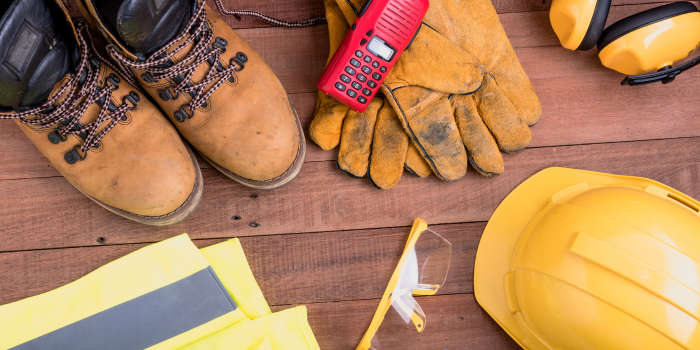Global Green Building Alliance Launches Guide to Drive $35 Trillion Net-Zero Investment

WASHINGTON D.C. – June 26, 2024 – An international alliance of world leading green building rating system organisations today announced the launch of the first global practical guide to facilitate the $35 trillion investment needed by 2030 to meet global energy transition goals.
Financing Transformation: A Guide to Green Building for Green Bonds and Green Loans details how various building verification and certification standards can be used to comply with global classifications and bond frameworks, setting a trajectory for the global built environment to meet a sustainable 1.5°C climate threshold.
Gillian Charlesworth, CEO of BRE, said the guide is a testament to the unified international commitment to tackling climate change head-on.
“By unlocking significant capital, we can drive the essential decarbonization of our built environment despite the inherent challenges,” Charlesworth said.
“This guide represents a monumental first step in coordinating a worldwide movement for green buildings, and we eagerly anticipate further collaboration to meet the challenge of climate change in the sector.”
With buildings accounting for over 30% of global energy use and more than a quarter of emissions, the International Energy Agency (IEA) has warned that the majority of existing buildings will still be standing in 2050, necessitating large-scale capital investments to support sustainable retrofits and meet climate targets.
Davina Rooney, CEO of the Green Building Council of Australia (GBCA), said the alliance will strengthen global cooperation between the finance and real estate sectors, which will be essential in kickstarting the $35 trillion investment needed by 2030.
“The $35 trillion investment needed to meet global energy transition goals represents almost 10% of the value of global real estate – so we’re talking about investments on a gigantic scale."
“The good news is that this guide demonstrates how working with any of the leading rating tools, whether it’s Green Star, LEED, BREEAM, Green Mark, HQE or NABERS, will ensure a better outcome for people, the planet, and your balance sheet.”
CEO of Singapore's Building and Construction Authority (BCA), Mr Kelvin Wong said, "The International Sustainable Finance Guide represents a significant step forward for the built environment as it will equip investors and financial institutions with the tools to recognise the value proposition of green buildings. We are confident that this initiative will lead to a wider adoption of BCA’s Green Mark Scheme and other similar green building rating systems internationally. This will help catalyse the sustainable growth of the building sector worldwide towards a low carbon future."
Executive Director of the Singapore Green Building Council (SGBC), Yvonne Soh, said the guide will ensure that rating systems can align with finance instruments and bond frameworks worldwide, driving impact on a global scale.
“This guide will bring us closer to a world where sustainable development is not just an option but a cornerstone of global economic activity,” Soh said.
Antoine Desbarrières, President of Alliance HQE-GBC France, said she is proud to contribute to the guide, which demonstrates a collective determination to transform the built environment.
“By promoting green finance and robust certification systems, we can accelerate the transition to sustainable buildings and infrastructure. This collaboration is crucial for driving the large-scale changes needed to meet our climate goals."
Despite the proliferation of sustainable finance instruments in recent years, their potential is undercut by limited understanding and uptake. The guide’s forward-looking recommendations are designed to bridge this gap, enhancing interactions between the finance and real estate sectors and standardising green building practices in diverse geographies.
Integrating major building certification systems like BREEAM, Green Mark, Green Star, HQE, LEED and NABERS provides a practical and robust framework for unlocking sustainable finance, ensuring that progress towards a more sustainable built environment is underpinned by scientifically backed, trustworthy methodologies.
President and CEO of the U.S. Green Building Council (USGBC), Peter Templeton, said the value of directing more capital into buildings and portfolios goes beyond decarbonization.
“While meeting our global decarbonization goals is an essential driver, investment in sustainable buildings and portfolios will also deliver measurable improvements to occupant health, community resilience and ecosystem restoration.”
The guide champions a holistic approach by integrating health and social outcomes as critical investment metrics, moving beyond mere financial and environmental returns. This transformative shift calls for a fundamental reshaping of traditional practices, encouraging investors to embrace the risks associated with new technologies, scale existing solutions, and prioritise social impacts. As such, the alliance is committed to developing criteria in tandem with finance providers to comprehensively create, measure and report on social value.
Produced by an international alliance comprising the UK-based Building Research Establishment (BRE), the Green Building Council of Australia (GBCA), the Singapore Green Building Council (SGBC), the U.S. Green Building Council (USGBC), and the newly welcomed Alliance HQE-GBC France, this groundbreaking guide marks a significant milestone in the coalition’s efforts to accelerate global climate action. These institutions are behind some of the world’s most influential green building rating systems — BREEAM (BRE), Green Star (GBCA), Green Mark (Singapore’s Building and Construction Authority and SGBC), HQE (Alliance HQE) and LEED (USGBC).
You can read the full guide — Financing Transformation: A Guide to Green Building for Green Bonds and Green Loans — here.
For use by SprayFoamMagazie.com & Spray Foam Magazine
Disqus website name not provided.









































